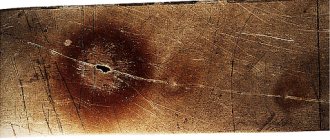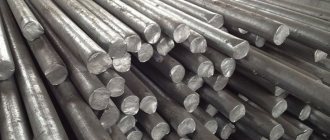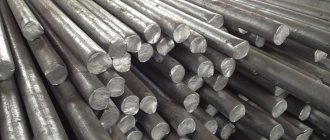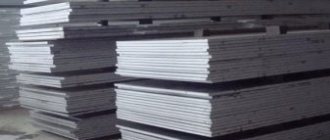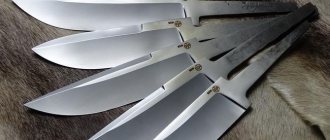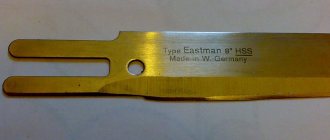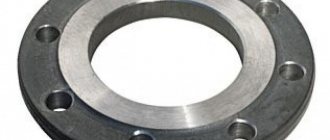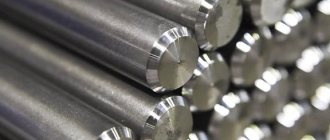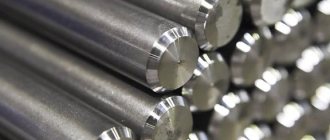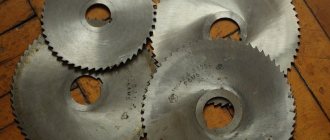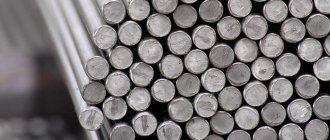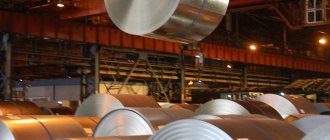Home / Articles / Selection of steel grades for building structures
Calculation of building structures is always inextricably linked with the selection of steel grade. Many builders, without delving into the complexity of calculating permissible loads, include C245 steel in the design and estimate as the most minimal. If such a grade is not available, it is replaced with a stronger one without changing the section size, which leads to an increase in the consumption of rolled metal and inflates the estimated cost of construction work.
Correspondence between steel grade and cost
There is an opinion that by using the lowest grade of steel, which is also the cheapest, it is possible to achieve the minimum cost of the structure. In fact, as the strength of steel increases, the total weight of the structure decreases, therefore, in the end, the cost of consumed rolled steel will be lower. In addition, there is a reduction in the load on the foundation and the level of seismic loads.
But it must be taken into account that the use of high-strength steels is not advisable if the selection of the cross-section is carried out taking into account ensuring stability.
When choosing steel grades, it is recommended to obtain information from suppliers about the availability and possibility of supplying the required material. This measure is necessary, since replacing it with a less durable one requires changing profiles and components, which increases construction time, and replacing a profile with a stronger one will lead to excessive consumption of steel. Steels 09G2S and St3sp/ps5 are among the most common and in demand.
Composition of chemical elements of steel according to analysis of a ladle sample:
| Name of steel | Mass fraction of element, % | |||||||||
| carbon, no more | manganese | silicon | sulfur, no more | phosphorus | chromium | nickel | copper | vanadium | other elements | |
| S235 | 0,22 | No more than 0.60 | No more than 0.05 | 0,05 | No more than 0.040 | No more than 0.30 | No more than 0.30 | No more than 0.30 | — | — |
| S245, S275, S345T, S375T | 0,22 | No more than 0.65 | 0,05-0,15 | 0,05 | No more than 0.040 | No more than 0.30 | No more than 0.30 | No more than 0.30 | — | — |
| S255, S285, S345T, S375T | 0,22 | No more than 0.65 | 0,15-0,30 | 0,05 | No more than 0.040 | No more than 0.30 | No more than 0.30 | No more than 0.30 | — | — |
| 0,22 | 0,8-1,10 | 0,05-0,15 | 0,05 | No more than 0.040 | No more than 0.30 | No more than 0.30 | No more than 0.30 | — | — | |
| 0,2 | 0,8-1,10 | 0,15-0,30 | 0,05 | No more than 0.040 | No more than 0.30 | No more than 0.30 | No more than 0.30 | — | — | |
| S345, S375, S390T | 0,15 | 1,30-1,70 | No more than 0.80 | 0,04 | No more than 0.035 | No more than 0.30 | No more than 0.30 | No more than 0.30 | — | — |
| S345K | 0,12 | 0,30-0,60 | 0,17-0,37 | 0,04 | 0,070-0,120 | 0,50-0,80 | 0,30-0,60 | 0,30-0,50 | — | Aluminum 0.08-0.15 |
| S390 | 0,18 | 1,20-1,60 | No more than 0.60 | 0,04 | No more than 0.035 | No more than 0.40 | No more than 0.30 | No more than 0.30 | 0,07-0,12 | Nitrogen 0.015-0.025 |
| S390K | 0,18 | 1,20-1,60 | No more than 0.17 | 0,04 | No more than 0.035 | No more than 0.30 | No more than 0.30 | 0,20-0,40 | 0,08-0,15 | Nitrogen 0.015-0.025 |
| S440 | 0,2 | 1,30-1,70 | No more than 0.60 | 0,04 | No more than 0.035 | No more than 0.40 | No more than 0.30 | No more than 0.30 | 0,08-0,14 | Nitrogen 0.015-0.025 |
| S590 | 0,15 | 1,30-1,70 | 0,40-0,70 | 0,035 | No more than 0.035 | No more than 0.30 | No more than 0.30 | No more than 0.30 | 0,07-0,15 | Molybdenum 0.15-0.25 |
| S590K | 0,14 | 0,90-1,40 | 0,20-0,50 | 0,035 | No more than 0.035 | 0,20-0,50 | 1,40-1,75 | No more than 0.30 | 0,05-0,10 | Molybdenum 0.15-0.25 |
| Nitrogen 0.02-0.03 | ||||||||||
| Aluminum 0.05-0.1 | ||||||||||
Features of popular grades of steel seamless pipes
To understand the influence of the chemical composition of raw materials on the possibilities of using finished products, let’s consider several special cases.
09G2S steel has two key advantages: excellent weldability and the ability to be used in a wide temperature range (from -70 to +425 degrees Celsius). At the same time, metal products do not lose their characteristics, therefore they are widely used in the installation of pipelines for various purposes in regions with unfavorable conditions, where other alloys cannot withstand external influences and are destroyed.
St10 and St20 have approximately the same characteristics and are characterized by high ductility and no restrictions on weldability, but cannot be used at temperatures below -40. Due to the relative ease of production and subsequent installation, such seamless metal pipes are used in most regions of Russia.
St35 and St45, in turn, are limited and difficult to weld, which imposes significant restrictions on installation possibilities. However, metal products made from them are characterized by increased strength and resistance to mechanical stress, which in some cases is critical.
Thus, it can be seen that seamless pipe steel not only affects the use of rolled products, but is also an extremely important aspect when choosing it for the high-quality implementation of any project.
Distribution of structural elements into groups
First of all, when choosing a steel grade, you need to establish the group to which the building elements will belong. SP 16.13330.2011, Appendix B provides a description of four groups:
Welded structures or their elements, the operating conditions of which are particularly difficult, according to the classification given by GOST 25546. The list includes crane beams, beams of working platforms and mobile transport tracks, structural elements of overpasses, main beams and crossbars, gallery spans, shaped parts of trusses, walls, bottoms, coatings for tanks and gas tanks, bunker beams, bunker shells, steel shells of chimneys, welded special supports for large transitions of overhead power lines at a height of over 60 m, elements and units of mast guy lines;
Welded structures or their elements, the operation of which is carried out under static load and tensile stress. The list includes trusses, frame crossbars, floor beams, stair stringers, overhead line supports, outdoor switchgear supports of substations, supports of transport galleries, masts for installing floodlights, elements of AC supports and other elements, as well as elements of the 1st group without welding, and suspended beams tracks made of I-beams in accordance with the requirements of GOST 19425 and TU 14-2-427;
Welded structures or their elements, the operation of which is carried out under static loads, mainly compression. This list includes columns, racks, support plates, elements for floor coverings, structures that support technological equipment, vertical connections along columns having stresses in design sections of more than 0.4 Ry, anchor, load-bearing and fixing structures of the transport contact network, supports for installation of outdoor switchgear equipment, elements of NPP shafts and towers, overpass columns, covering purlins, as well as elements belonging to the 2nd group without welding;
Designs of buildings and structures for auxiliary purposes. The list includes connections, in addition to those specified in group 3, elements of half-timbering, stairs, ladders, platforms, fences, m/c cable channels, elements of auxiliary structures, as well as elements of group 3 without welded joints.
Definition of steel according to regulatory documents
It is necessary to establish the climatic region of construction work, know the outside air temperature, guided by SP 131.13330.2012 (as amended by SNiP 23-01-99*).
According to SP 16.13330.2011, the temperature of the coldest day with an index of 0.98 is taken for calculations. According to SNiP II-23-81 - the temperature observed during the coldest five-day period, with an index of 0.92.
The effect of temperature on steel grade is explained by the property of increasing brittleness of steel with decreasing temperature.
The use of SP 16.13330.2011 from July 1, 2015 is mandatory, therefore data from this source should be used in calculations. For comparison, you can analyze the requirements of SP 16.133302011 and the no longer valid SNiP II-23-81.
Let's consider table B.1 SP 16.13330.2011, where the following types of materials are assigned for the designed structures:
| Steel grade according to | Conditions for using steel at design temperature, °C | |||||||||||||
| t ≥ -45 | -45 > t ≥ -55 | t < -55 | ||||||||||||
| GOST 27772 | GOST 535, GOST 14637 | GOST 19281 | for groups of structures | |||||||||||
| 1 | 2 | 3 | 4 | 1 | 2 | 3 | 4 | 1 | 2 | 3 | 4 | |||
| S235 | St3kp2, St3ps2 | — | — | + | + | — | — | — | — | — | — | — | — | |
| S245 | St3ps5 | — | + | x | — | — | — | — | + | — | — | — | + | |
| S255, S285 | St3sp5 | + | x | x | — | — | — | — | + | — | — | — | + | |
| S345, S375 | 09G2S | 3 | 1 | 1 | — | 3 | 3 | 1 | — | 4 | 4 | 2 or 3 | ||
| 12 | 4 | 4 | 12 | 12 | 4 | 15 | 15 | 7 or 12 | ||||||
The table has 3 columns indicating the standards for choosing a steel grade. The steel grade GOST 27772 indicates the yield strength of the metal, for example, C235 - the yield strength of steel is 235 N/mm2, the chemical composition of the steel is indicated by the markings GOST 353, GOST 14637 and GOST 19281, strength characteristics are indicated in GOSTs.
Steel produced according to the requirements of one GOST may correspond in its characteristics to material made according to another GOST; they will differ only in the methods of steel quality control. There is no single standard in the world that regulates the designation of steel grades; the standards used in Russia, the USA, and European countries are different, but this does not mean that the steel has different composition and quality.
According to Table 50 of SNiP II-23-81, the following steel grades are assigned:
| Steel | GOST or TU | Steel category for the climatic region of construction (design temperature, °C) | ||
| II4 (-30 > t ≥ — 40); II5 and others (t ≥ -30) | I2, II2 and II3 (-40 > t ≥ -50) | I1 (-50 > t ≥ -65) | ||
| Group 1. Welded structures or their elements operating in particularly difficult conditions or directly exposed to dynamic, vibration or moving loads [crane beams; work platform beams; structural elements of bunker and unloading platforms that directly bear the load from rolling stock; truss gussets; span structures of conveyor galleries; welded special supports for large crossings of power lines (VL) with a height of more than 60 m; elements of guy lines for masts and guy lines; beams for cranes of hydraulic structures, etc.]. | ||||
| S255 | GOST 27772-88 | + | — | — |
| S285 | + | — | — | |
| S345 | 3 | 3 | 4a) | |
| S375 | 3 | 3 | 4a) | |
| S390 | + | + | +b) | |
| S390K | + | + | +b) | |
| S440 | + | +b) | +c) | |
| Group 2. Welded structures or their elements operating under static load [trusses; frame crossbars; floor and roof beams; stringers of stairs; overhead line supports, with the exception of welded supports of large transitions; busbar supports for open switchgear substations (OSU); supports for outdoor switchgear switches; supports for conveyor galleries; elements of the transport contact network (rods, anchor guys, clamps); floodlight masts; elements of combined supports of antenna structures; pipelines of hydroelectric power stations and pumping stations; lining of water pipelines; embedded parts of gates and other stretched, stretched-flexible and bendable elements], as well as structures and their elements of group 1 in the absence of welded joints and suspended track beams made of I-beams in accordance with GOST 19425-74* and TU 14-2-427-80, if available welded installation connections. | ||||
| S245 | GOST 27772-88 | +d) | — | — |
| S255 | + | — | — | |
| S275 | +d) | — | — | |
| S285 | + | — | — | |
| S345 | 1 | 3 | 4a,d) | |
| S345K | + | — | — | |
| S375 | 1 | 3 | 4a,d) | |
| S390 | + | + | +b) | |
| S390K | + | + | +b) | |
| S440 | + | + | +c) | |
| S590 | + | — | — | |
| S590K | — | + | + | |
| VSt3kp up to 4 mm thick | GOST 10705-80*, group B, table. 1 | 2e) | 2e) | — |
| VSt3ps up to 5.5 mm thick | Same | 2e) | — | — |
| VSt3ps thickness 6-10 mm | « | 6 | — | — |
| 16G2AF thickness 6-9 mm | TU 14-3-567-76 | + | + | + |
| Group 3. Welded structures or their elements operating under static load [columns; racks; base plates; flooring elements; structures supporting process equipment; vertical connections along columns with stress, in connections exceeding 0.4 Ry; anchor, load-bearing and fixing structures (supports, crossbars, clamps) of the transport contact network; supports for outdoor switchgear equipment, except for supports for switches; elements of trunks and towers of antenna structures; columns of concrete trestles, covering purlins and other compressed and compressed-bending elements], as well as structures and their elements of group 2 in the absence of welded joints. | ||||
| S235 | GOST 27772-88 | +e,i) | — | — |
| S245 | + | — | — | |
| S255 | + | +g) | — | |
| S275 | + | — | — | |
| S285 | + | +g) | — | |
| S345 | 1 | 1 | 2 or 3 | |
| S345K | + | + | — | |
| S375 | 1 | 1 | 2 or 3 | |
| S390 | + | + | + | |
| S390K | + | + | + | |
| S440 | + | + | + | |
| S590 | + | — | — | |
| S590K | — | + | + | |
| VSt3kp up to 4 mm thick | GOST 10705-80*, group B | 2e) | 2e) | — |
| VSt3kp thickness 4.5-10 mm | Same | 2e) | — | — |
| VSt3ps thickness 5-15 mm | GOST 10706-76*, group B, with additional requirement | 4 | — | — |
| VSt3ps up to 5.5 mm thick | GOST 10705-80*, group B | 2e) | 2e) | — |
| VSt3ps thickness 6-10 mm | GOST 10705-80*, group B | 6 | — | — |
| VSt3sp thickness 5-15 mm | GOST 10706-76*, group B, with additional requirement | — | 4 | — |
| VSt3sp 6-10 mm thick | GOST 10705-80*, group B | — | 5 | — |
| 16G2AF thickness 6-9 mm | TU 14-3-567-76 | + | + | + |
| Group 4. Auxiliary structures of buildings and structures (connections, except those specified in group 3; timber frame elements; stairs; ladders; platforms; fences; metal structures of cable channels; secondary elements of structures, etc.), as well as structures and their elements of group 3 in the absence of welded joints. | ||||
| S235 | GOST 27772-88 | + | — | — |
| S245 | — | + | + | |
| S255 | — | + | + | |
| S275 | — | + | + | |
| S285 | — | + | + | |
| VSt3kp up to 4 mm thick | GOST 10705-80*, group B | 2e) | 2e) | 2e) |
| VSt3kp thickness 4.5-10 mm | Same | 2e) | — | — |
| VSt3ps thickness 5-15 mm | GOST 10706-76*, group B, with additional requirement | 4 | 4 | — |
| VSt3ps up to 5.5 mm thick | GOST 10705-80*, group B | 2e) | 2e) | 2e) |
| VSt3ps thickness 6-10 mm | Same | 6 | 6 | — |
The temperature gradation given in SNiP II-23-81 is 5 degrees lower than in SP 16.13330.2011, but the temperature adopted does not correspond to the coldest day, but characterizes the temperature of the coldest five-day period.
When studying the joint venture “Construction Climatology”, one can see that in the vast majority of accepted conditions will be equivalent, but there are cases when SNiP stipulates more stringent requirements, and in some cases the requirements in the joint venture will be higher. Therefore, the examination requires compliance of the steel grade with the regulatory values of SP 16.13330.2011, however, if SNiP II-23-81 imposes more stringent requirements, it is recommended to use this document.
If it is necessary to select a material for connections of steel structures, it is necessary to use Appendix G SP 16.13330.2011.
By considering the SP tables, you can determine the recommended options for steel grades and perform calculations. If there is a choice, several options should be studied in order to, using the data from the feasibility study, select the best option.
In each of the given groups of structures, data on impact strength at different temperature conditions of steel operation are provided.
To select steel and make a decision within each group, a comparison of TECs must be made that determine the dependence of the cost of the structure on steel consumption.
Selection of steel based on strength indicators
Based on strength indicators, steel is conventionally divided into three groups:
- with strength of the usual level (σy< 29 kN/cm2);
- with increased strength (29 kN/cm2 ≤ σy< 40 kN/cm2);
- with high level strength (σy ≥ 40 kN/cm2).
Steels that have a normal level of metal strength are represented by low-carbon classes C235 - C285, which have different degrees of deoxidation (boiling, semi-calm and calm).
Steels with increased strength are represented by low-alloy classes C345 - C390. They have high impact strength and a fine-grained structure, which allows them to be used for the production of structures in the “northern version”.
Steels with high-level strength are represented by strength classes C440 – C590.
Due to the high strength of the metal, the use of such steels allows for metal savings, but due to the costs of alloying and heat treatment, they are more expensive in comparison with low-carbon steels of ordinary quality.
Steels C345 and C375 are tested for impact strength at various temperature conditions, which makes it possible to determine the level of danger of brittle fracture taking into account the operating temperature of the structures.
Such steels are supplied in four categories.
For structures erected in climatic regions 1, 2, 2 and 3 when operating in heated rooms, steel grades should be selected as for operating conditions in climatic region 4, except for steels C245 and C275.
Selection of materials for welding
When carrying out construction work in modern conditions, the connection of elements is carried out mainly using electric arc welding.
Taking into account the conditions of production and installation of building structures, the design of the metal elements used, the use of basic materials, it is possible to use electric arc welding, represented by such types as manual, mechanized and automatic.
When welding joints, compliance with their strength characteristics is required, which are determined based on the strength of the metal of the connecting elements, the strength of the deposited weld metal, the shape of the joint and its type, as well as the stresses arising in the joint, the nature of the applied force on the joint, and the welding technology used.
Considering the characteristics of the strength of the deposited weld metal, it should be noted that this indicator is determined by the material of the electrode wire used, the composition of the coating of the electrodes used in manual welding, and the quality of the flux using welding technology in automatic and mechanized mode. With the correct choice of materials, it is possible (subject to compliance with the requirements and technology of the welding process) to ensure the strength of the deposited metal, which in its characteristics is not inferior to the strength of the base metal.
Marking of shaped steel made of steel C235, C245, C255, C275, C285, C345 and C375 is carried out with indelible paint, using the colors shown in the table below:
| Name of steel | Marking colors |
| S235 | Yellow and brown |
| S245 | Yellow and green |
| C 255 | Yellow and blue |
| S275 | Yellow and white |
| S285 | White and brown |
| S345 | Blue and brown |
| S375 | Blue and white |
Rating of knife steels
For convenience, in the TOP steels and alloys for the manufacture of fixed-type knife blades, they are presented in order of increasing characteristics and prices, respectively.
9ХС
High carbon steel is present at the bottom of the rating due to the fact that it is a sales leader. Knives of the budget category with a decent cut and an edge that doesn’t dull for a long time. 9ХС steel is very difficult to forge; if the temperature conditions are violated, the edge will crack. But, after proper forging, the edge is able to withstand light impact loads. For example, you can use a knife to chop branches for a fire.
Inexpensive high-speed steel was originally developed for the mass production of drills. This carbon became a knife material much later.
95Х18
Domestic forged stainless steel, completely maintenance-free, usually with a glossy, shiny polished mirror surface. Steel belongs to the budget category and is available to a wide range of consumers. It cuts somewhat worse and dulls much faster compared to high-carbon steels. It is not afraid of shock loads, but has low fracture strength.
Steel 95X18 can be hardened to a cutting edge strength of 58 HRC. The first sharpening is carried out at the factory, after which the knife can be easily straightened and sharpened at home without special tools. Food acids and high temperatures in household ovens cannot corrode stainless steel.
Blades made of steel 95X18 are used in fishing, tourist, chef, cutting, fillet, souvenir, and gift knives. Hunters with licenses for large game - elk, wild boar - rarely use it. Aggressive cutting is impossible in principle here. Professionals believe that stainless steel “irones” and does not cut. The sharpening is not enough to cut an adult elk. The blade will have to be sharpened during the process in the field, which is uncomfortable, for example, in winter.
Friends!Subscribe to ouryoutube channelWaiting for you! |
N690
Another steel from the manufacturer Bohler (Austria, Germany), completely stainless, under no circumstances. The hardness of N690 depends on the heat treatment cycle:
- when quenching in oil after heating at +1030°C followed by tempering twice for an hour at +190°C, the hardness is HRC 59 units;
- by increasing the hardening temperature to +1080°C with exactly the same tempering conditions, the hardness reaches HRC 61 units.
Compared to X12MF, this steel dulls a little faster, but sharpens faster and easier, and does not require maintenance. Martensitic stainless steel has a high carbon content to ensure aggressive cutting properties - hardness, long-term sharpening, and sharpness. To prevent it from rusting, alloying elements are introduced into the steel. They also provide elasticity, plasticity, and viscosity.
K110
If the previous alloy is positioned by knife workshops “for the chopper,” then the Bohler K110 is intended exclusively for cutting, dissecting, planing and piercing. The material absolutely cannot withstand shock loads, breaking out, rotation, or fracture stress. With the same average purchase price as N690, K110 steel is much cheaper to process.
Accordingly, the knives are cheap, the blades do not rust at all with a high chromium content. They are used in all areas of life and extreme hobbies, if they are not subjected to the above categories of loads. In field conditions, the cutting edge of a blade that has become dull when cutting a deer can be corrected on a nearby stone, a gun barrel, or a metal flask.
Damascus
The next hardest knife material is Damascus steel with an HRC of 61 units. In its category, this is the only material in which the characteristics are determined not by chemical, but by mechanical methods. Roughly speaking, in steels and alloys, iron, carbon and alloying additives enter into a chemical reaction at the time of melting and during subsequent heat treatment. That is, at the molecular level.
In Damascus, strips or wires of low and high carbon steels and/or nickel (tessellated Damascus) are welded to each other, twisted or bent repeatedly at high temperatures. In this case, the metals do not melt, but they are soldered together to a homogeneous structure.
Thus, Damascus can be considered as a mixture of pieces of hard high-carbon steel in a ductile medium of low-carbon steel. Carbon sharpens, has an aggressive cut, and does not dull for a long time. Impact loads during cutting and bending forces applied to the blade are compensated by the ductility of low-carbon steel around the grains of high-carbon steel.
The disadvantages of Damascus are low corrosion resistance and the need to maintain the blade, respectively. Damascus bags are welded and forged by hand, which increases the production cost of each product. In addition, expensive metals or a large number of different steels with different properties can be added to patterned steel.
Therefore, Damascus can be cheap and expensive. Some of its types are used exclusively for “shelf” knives, which are never used for their intended purpose. They are used to replenish collections, give knives as gifts or buy them as souvenirs, and decorate interiors with copies of bladed weapons. However, they all maintain an aggressive cut and a long-lasting edge retention.
X12MF
The most popular structural material for blades on the Russian knife market is, undoubtedly, X12MF steel. In the middle price category, it has a perfectly balanced ratio of quality and production costs. The HRC hardness index of 62 units is combined here with a high content of alloying elements. However, the steel is conditionally stainless and uses a standard operating algorithm:
- you can cut and chop any food;
- After use, the blade must be rinsed;
- After each use, the knife is wiped dry;
- Before long-term storage, the steel is lubricated with any oil available in the house.
Conventionally, stainless steel X12MF is ideal for hunters (aggressive cutting of skin and meat) and tourists (planing, chopping, cutting, piercing, dissecting materials). For fishermen and cooks, this is not the best option due to the high moisture content, food acids, and high-temperature environments.
Bohler K340
K-340 steel is produced by the Austrian-Danish concern Bohler, and among specialists it is called cast Damascus. The blade can be used to chop off the horn of a cow, open a tin can, and the K 340 shows good results in the rope test. The hardness is comparable to the previous version X12MF - 62 Rockwell units. However, there is less carbon here, and the hardness is provided by alloying elements.
Accordingly, the corrosion resistance of K340 is higher; the blade does not split if accidentally dropped on stone or iron. The standard for this grade of steel is the StoneWash finish - etching to a matte gray color in acid, then treated with a jet of emulsion with an abrasive (sandblasting or shot blasting).
The material is, in principle, not fancy, reliable for fishing, hiking, hunting and in the kitchen. With minimal maintenance, the knife will last a very long time.
ХВ5
Both manufacturers and consumers often call XB5 steel “diamond” due to its hardness HRC of 65 units. For everyday needs and extreme hobbies this is more than enough. This is exactly the case when the user sacrifices comfort for the sake of bare functionality.
The diamond will not become dull when cutting two elk carcasses; it cuts aggressively, but you will have to take care of the knife more carefully. Because metal rusts in water, in aggressive environments, when chopping vegetables, gutting fish, and even from human sweat. If you hold a collectible knife with a blade made of XB5 in your hands and put it in a case without wiping the blade, dark spots will appear on it, which are much more difficult to remove than to carry out preventive measures before.
The cutting edge becomes especially fragile in the cold; dropping it on stones in winter is not recommended. Bones are not cut with an XB5 diamond, and cans are not opened. But with such a knife you can perform tricks with cutting hair on the arm, cutting paper and scarves that fall to the edge under its own weight.
M390 and Elmax
Elmax and M390 powder steels produced by the international Austro-Swedish company Bohler Uddeholm have identical properties. Elmax steel with a hardness of HRC 64 units does not rust in high-temperature and aggressive environments. Strength combined with high toughness, that is, the properties of Damascus provide a strong cut, long retention of sharpening, resistance to impact, bending, torsion and breaking loads.
Alloy M390 is an improved version of Elmax with 1.9% carbon instead of 1.7%, chromium content 20% instead of 18%. A non-specialist will not notice the difference between the ancestor of powder steels Elmax and the modified version M390, whether on meat or vegetables.
Such blades are expensive, but they do not require maintenance, hold an edge for a long time, and are sharpened once a month if properly stored. These are good in the kitchen, camping, fishing, hunting, mushroom picking, preparing brooms, that is, “for all occasions.”
Bulat
The production of Bulat consumes a large amount of energy, manual labor, and material assets. For example, to smelt 2 - 3 knife strips, one medium-sized crucible is consumed, which is destroyed after smelting due to loss of working properties.
The steel is high-carbon, alloyed, but unfortunately does not have anti-corrosion properties. Therefore, care is necessary, hardness and ductility are high. Bulat steel is in demand by all categories of users.
P18
Domestic high-speed steel R-18 was created for the manufacture of turning, drilling, and milling tools. That is, after sharpening the edge, it can easily cut less durable steels and any other structural materials. Therefore, a priori, with everyday tasks - cutting up a wild boar, picking up a bear on a hunt, filleting fish on the river, sharpening tent pegs on a hike, chopping branches for a fire in the country, slicing sausage at a picnic, meat and vegetables in the kitchen, it copes 100%.
The hardness of the metal is 65 units on the Rockwell scale. Therefore, the slang, highly specialized name P18 “diamond” steel does not correspond to reality. On the Rockwell scale, this mineral is assigned a value of 100 units. Simply, at the time of its inception, steel was considered the strongest of the existing cast modifications.
It should be understood that the characteristics of the blade depend on the steel grade by only 50%. The rest is decided by the geometry of the blade - the sharpening angle, the type of bevel (Scandi, straight wedge, Convex), the presence of leads, the shape of the cutting edge (smooth, teeth, serrated, wave).
Therefore, with some P18 diamond knives you can actually open cans, scratch, cut glass, HRC 61 units, which is 3 units lower than that of the material in question, and perform other tricks while fishing, hunting, or camping around a fire.
Knives made from quick-cut P18 are used mainly by professionals and wealthy lovers of extreme types of hobbies. Hobbyists and users of budget categories often forge blades from reamer, taps and drills, dies and countersinks, and other tools made from R-18 diamond.
Laminate
Unlike construction finishing material with the same name, knife steel of this type is in strong demand in the professional environment. Laminated steel is the third variety of Damascus and Bulat to solve the same problem - to combine the properties of the highest hardness, toughness, strength and ductility in one material or, in extreme cases, a product.
The way to solve the problem here is different, no less original. The core is made from a strip of high-carbon steel with a maximum carbon content, for example, U-12. On the sides the core is lined with two layers of Bulat, Damascus, stainless steel, corrosion-resistant or any other steel with special properties.
When sharpening, the side layers are ground down to zero, and the core is sharpened with an abrasive tool. Rust can only occur on the cutting edge; the butt, butt, heel and slopes are protected from corrosion through the use of alloys with appropriate properties.
Covers with a hardness of HRC 35 units do not allow the core HRC 62 - 6 units to break under torsional, breaking loads. They may have high decorative qualities, for example, the Damascus pattern “Mosaic”, “Cobweb”, “Thunderstorm”, “Rhombus”, “Runes”.
The blade is suitable for defense, kitchen, picking up animals, cutting fish, setting up a tourist camp, collecting, interior decoration, for example, in a fireplace room or a hunting lodge.
PGK
PGK steel is a successful development of the German family plant Lohmann. It successfully competes with more expensive and famous alloys CPM 3V and CTS-PD1 from US institutes. When tested - 10 blows on a cattle tibia, dry bamboo and elk horn - the 40° cutting edge remains intact and does not change the geometry.
When the sharpening angle is reduced to 15° on each side, the edge begins to crumble and bend, like a scythe when punched with cold work. Thus, during aggressive aggressive cutting of meat and animal skins, German PGK steel has high toughness, ductility, and elasticity.
Accordingly, PGK stainless steel is suitable for all types of knives - lockjaw, fishing, mushroom picking, hunting, harvesting herbs and brooms, cutting food, sharpening stakes, but with the correct choice of blade geometry.
S390
Steel S 390 is a Russian powder quick cutter with improved characteristics. Tool steel has virtually no defects or imperfections and has a homogeneous structure. After heat treatment, the hardness of the cutting edge is HRC 69 units. In the catalogs of most knife shops, this is the hardest construction material.
The maximum that can happen to this conditionally stainless steel is the appearance of dark spots that spoil the design of the blade. Therefore, minimal care for expensive S390 knives is still necessary. With the correct sharpening angle of the cutting edge, you can show tricks to the sharpness of the blade - it will cut silk scarves and bird feathers on the fly.
If there is a butt, the blade can scratch glass and cut bottles, and perform tricks on the strength and hardness of the knife. The price of such blades is the highest in their category. A knife from S390 costs as much as a Damascus saber three times the size.
Friends!Subscribe to ouryoutube channel |
Steel grades replaced by steels according to GOST 27772-88
| Steel according to GOST 27772-88 | Replaceable steel grade | GOST or TU |
| S235 | VSt3kp2 | GOST 380-71** |
| VSt3kp2-1 | TU 14-1-3023-80 | |
| 18kp | GOST 23570-79 | |
| S245 | VSt3ps6 (rolled sheets up to 20 mm thick, shaped - up to 30 mm) | GOST 380-71** |
| VSt3ps6-1 | TU 14-1-3023-80 | |
| 18ps | GOST 23570-79 | |
| S255 | VSt3sp5, VSt3Gps5, VSt3ps6 (rolled sheets with a thickness of over 20 to 40 mm, shaped - over 30 mm), | GOST 380-71** |
| VSt3sp5-1, VSt3Gps5-1, | TU 14-1-3023-80 | |
| 18sp, 18Gps, 18Gsp | GOST 23570-79 | |
| S275 | VSt3ps6-2 | TU 14-1-3023-80 |
| S285 | VSt3sp5-2, VSt3Gps5-2 | TU 14-1-3023-80 |
| S345, S345T | 09G2 | GOST 19281-73*, |
| GOST 19282-73* | ||
| 09G2S, 14G2 (sheets, shaped steel up to 20 mm thick), 15HSND (sheet rolled metal up to 10 mm thick, shaped steel up to 20 mm) | GOST 19282-73* | |
| 12G2S gr. 1 | TU 14-1-4323-88 | |
| 09G2 gr. 1, 09G2 gr. 2, 09G2S gr. 1, 14G2 gr. 1 (shaped - up to 20 mm) | TU 14-1-3023-80 | |
| 390 | TU 14-15-146-85 | |
| VStTps | GOST 14637-79* | |
| S345K | 10KhNDP | GOST 19281-73*, |
| GOST 19282-73*, | ||
| TU 14-1-1217-75 | ||
| S375, S375T | 09G2S gr. 2 | TU 14-1-3023-80 |
| 12G2S gr. 2 | TU 14-1-4323-88 | |
| 14G2 gr. 1 (shaped rolled products over 20 mm thick), 14G2 gr. 2 (shaped rolled products up to 20 mm thick) | TU 14-1-3023-80 | |
| 14G2 (shaped and sheet rolled products with a thickness of over 20 mm), 10G2S1, 15ХСND (shaped rolled products with a thickness of over 20 mm, sheets with a thickness of over 10 mm), 10ХСND (shaped rolled products with no thickness limitation, sheets with a thickness of up to 10 mm) | GOST 19281-73*, | |
| GOST 19282-73* | ||
| S390, S390T | 14G2AF, 10G2S1 heat-strengthened, 10HSND (rolled sheets over 10 mm thick) | GOST 19282-73* |
| S390K | 15G2AFDps | GOST 19282-73* |
| S440 | 16G2AF, 18G2AFps, 15G2SF heat-strengthened | GOST 19282-73* |
| S590 | 12G2SMF | TU 14-1-1308-75 |
| S590K | 12GN2MFAYU | TU 14-1-1772-76 |
Notes: 1. Steels S345 and S375 of categories 1, 2, 3, 4 according to GOST 27772-88 replace steels of categories 6, 7 and 9, 12, 13 and 15 according to GOST 19281-73* and GOST 19282-73*, respectively.
2. Steels S345K, S390, S390K, S440, S590, S590K according to GOST 27772-88 replace the corresponding steel grades of categories 1-15 according to GOST 19281-73* and GOST 19282-73*, indicated in this table.
3. Replacement of steels in accordance with GOST 27772-88 with steels supplied in accordance with other state all-Union standards and technical conditions is not provided.
Alloy influence
The next aspect that influences how seamless steel pipes will be used is the steel grade. Possible types of alloys are indicated in the above-mentioned state standards. In particular, the following steels are used for the production of hot-rolled steel:
- carbon of normal quality,
- high-quality construction,
- alloyed structural,
- increased strength.
For the production of cold-deformed products, the first type from the list is not used, but an additional type is used - spring-carbon and alloy.
As for specific grades, the following steels are used according to the standard for hot-rolled steel: st2sp, st4sp, st5sp, st6sp, 10, 20, 35, 45, 10G2, 20Х, 40Х, 30ХГСА, 15ХМ, 30ХМА, 12ХН2, 09Г2С and others.
Seamless steel pipe made from alloys St10-45 and 09G2S can be considered the most popular on the market.
Cold-deformed pipes according to GOST are produced from a smaller number of grades due to the fact that not all of them allow effective deformation without increasing the temperature. These include: st10-45, 09G2S, 10G2, 15Х, 20Х, 40Х, 30ХГСА, 15ХМ.
Products from grades 10, 20 and 09G2S are in high demand.
Mechanical properties, impact strength, bending test conditions
| Steel according to GOST 27772-88 | Replaceable steel grade | GOST or TU |
| S235 | VSt3kp2 | GOST 380-71** |
| VSt3kp2-1 | TU 14-1-3023-80 | |
| 18kp | GOST 23570-79 | |
| S245 | VSt3ps6 (rolled sheets up to 20 mm thick, shaped - up to 30 mm) | GOST 380-71** |
| VSt3ps6-1 | TU 14-1-3023-80 | |
| 18ps | GOST 23570-79 | |
| S255 | VSt3sp5, VSt3Gps5, VSt3ps6 (rolled sheets with a thickness of over 20 to 40 mm, shaped - over 30 mm), | GOST 380-71** |
| VSt3sp5-1, VSt3Gps5-1, | TU 14-1-3023-80 | |
| 18sp, 18Gps, 18Gsp | GOST 23570-79 | |
| S275 | VSt3ps6-2 | TU 14-1-3023-80 |
| S285 | VSt3sp5-2, VSt3Gps5-2 | TU 14-1-3023-80 |
| S345, S345T | 09G2 | GOST 19281-73* |
| GOST 19282-73* | ||
| 09G2S, 14G2 (sheets, shaped steel up to 20 mm thick), 15HSND (sheet rolled metal up to 10 mm thick, shaped steel up to 20 mm) | GOST 19282-73* | |
| 12G2S gr. 1 | TU 14-1-4323-88 | |
| 09G2 gr. 1, 09G2 gr. 2, 09G2S gr. 1, 14G2 gr. 1 (shaped - up to 20 mm) | TU 14-1-3023-80 | |
| 390 | TU 14-15-146-85 | |
| VStTps | GOST 14637-79* | |
| S345K | 10KhNDP | GOST 19281-73* |
| GOST 19282-73* | ||
| TU 14-1-1217-75 | ||
| S375, S375T | 09G2S gr. 2 | TU 14-1-3023-80 |
| 12G2S gr. 2 | TU 14-1-4323-88 | |
| 14G2 gr. 1 (shaped rolled products over 20 mm thick), 14G2 gr. 2 (shaped rolled products up to 20 mm thick) | TU 14-1-3023-80 | |
| 14G2 (shaped and sheet rolled products with a thickness of over 20 mm), 10G2S1, 15ХСND (shaped rolled products with a thickness of over 20 mm, sheets with a thickness of over 10 mm), 10ХСND (shaped rolled products with no thickness limitation, sheets with a thickness of up to 10 mm) | GOST 19281-73* | |
| GOST 19282-73* | ||
| S390, S390T | 14G2AF, 10G2S1 heat-strengthened, 10HSND (rolled sheets over 10 mm thick) | GOST 19282-73* |
| S390K | 15G2AFDps | GOST 19282-73* |
| S440 | 16G2AF, 18G2AFps, 15G2SF heat-strengthened | GOST 19282-73* |
| S590 | 12G2SMF | TU 14-1-1308-75 |
| S590K | 12GN2MFAYU | TU 14-1-1772-76 |
* For sheet metal and strip 5 mm thick, the impact strength standard is 39 J/cm2 (4.0 kgf•m/cm2)
** For sheet metal and strip 5 mm thick, the impact strength standard is 34 J/cm2 (3.5 kgf•m/cm2)
Assortment of products made from St. 45, GOST standards
According to current standards, a sufficient number of well-known rolled metal products are made from grade 45 steel - hot-rolled steel circle. 45, sheet, square st45, pipes.
Long products, including shaped steel, are manufactured according to the strict requirements of GOSTs: 1050-88, 10702-78, 2590-2006 and 2591-2006, 2879-2006, 8509-93 and 8510-86, as well as 8239-89, 8240-97.
- To produce a calibrated rod, it is necessary to comply with the requirements of standards 1050-88, 8559-75 and 8560-78, 7417-75,
- sheet metal: thick (GOST 1577-93, 19903-74), thin - GOST 16523-97,
- stripes (GOSTs 103-2006, 1577-93, 82-70),
- ground rod – GOST 14955-77,
- steel strips 45 – GOST 2284-79,
- forged blanks - GOST 8479-70, 1133-71,
- pipes - standards 8732-78, 8731-74, 8733-74, 8734-75, and also 21729-76,
- wires - GOST 17305-91, 5663-79.
Classification of materials for electrodes
Manual welding is carried out using consumable electrodes, divided according to GOST 9467-75 into types and grades.
For the production of electrodes, low-carbon wire of the Sv-08 grade is used, and for welding structures operated in difficult conditions, wire of the Sv-08A grade is used.
The letters in the marking of the electrodes indicate the welding wire, the numbers indicate the average carbon content, given in fractions of a percent. The letter A indicated at the end confirms the increased purity of the metal. The metal has a limited content of sulfur and phosphorus, so it has increased ductility, which is characterized by relative elongation and impact strength. For welding low-alloy steels, wire is used whose chemical composition contains alloying elements. They are designated in the brand by letters generally recognized when marking low-alloy steels.
Electrodes are divided into types in accordance with the value of the temporary resistance of the weld metal. For example:
- the use of electrode E42 makes it possible to obtain a weld with a value of σu ≥ 42 kN/cm2. It is used for welding steels with σu ≤ 42 kN/cm2;
- the use of the E50 electrode makes it possible to obtain a weld with a value of σu ≥ 50 kN/cm2 and is used for welding steels with σu ≤ 50 kN/cm2.
In addition to this basic classification, the electrodes are subdivided according to a number of other characteristics:
- according to the technological qualities of welding, which determine the location of the weld in space and the depth of penetration;
- by the thickness of the applied coating, which can be thin or thick;
- by the method of obtaining the coating, performed by dipping or crimping;
- by the nature of the slag during metal melting, which can be acidic or basic;
- by the nature of the current and the method of polarity, which can be alternating or constant, direct or reverse polarity, etc.
To determine the brand of electrode, you need to know the composition of the coating and choose based on the type of welding current and the location of the seam in space.
With automatic welding using flux, it is possible to obtain the best quality weld. For welding, solid steel welding wire and various fluxes, as well as flux-cored wire, are used.
To perform mechanized welding, an electrode wire that has gas protection is required, that is, welding is carried out in a carbon dioxide environment, a weld pool or flux-cored wire.
Welding for structures of groups 2, 3 and 4 located in climatic regions 1, 2, 2, 3, and for structures of group 1 in all climatic regions, requires the use of electrodes with index A (E42A, E46A, E50A).
When designing T- and fillet welded joints of steel structure elements with tensile stress, to prevent layered destruction of the metal under the weld, the following is used:
- steel for Group 1 structures with a yield strength of up to 375 MPa, as well as steel with guaranteed mechanical properties in the direction of rolled thickness:
For seams produced by manual welding, Rwun must be equal to the tensile strength of the weld metal, according to GOST 9467-75*.For seams obtained by automatic or mechanized welding, Rwun must be taken based on the SNiP tables.
The reliability factor indicator related to the weld material, gwm, must be taken within the following limits: 1.25 – with Rwun values not exceeding 490 MPa; 1.35 – for values of Rwun = 590 MPa and more.
- welding materials with reduced strength and increased ductility. The use of welding techniques that reduce welding stresses without the use of cored wire is required.
Types of steels and features of their markings
Steel is an alloy of iron and carbon, the content of which is no more than 2.14%. Carbon gives the alloy hardness, but if it is in excess, the metal becomes too brittle.
One of the most important parameters by which steels are divided into different classes is the chemical composition. Among the steels according to this criterion, alloyed and carbon steels are distinguished, the latter are divided into low-carbon (carbon up to 0.25%), medium-carbon (0.25–0.6%) and high-carbon (they contain more than 0.6% carbon).
Types of steels
By including alloying elements in the steel, it can be given the required characteristics. It is in this way that, by combining the type and quantitative content of additives, grades with improved mechanical properties, corrosion resistance, magnetic and electrical characteristics are obtained. Of course, it is possible to improve the characteristics of steels using heat treatment, but alloying additives make it possible to do this more efficiently.
Based on the quantitative composition of alloying elements, low-, medium- and high-alloy alloys are distinguished. In the first alloying elements there is no more than 2.5%, in medium alloyed elements - 2.5–10%, in highly alloyed ones - more than 10%.
Steels are classified according to their purpose. Thus, there are instrumental and structural types, grades distinguished by special physical properties. Tool types are used for the production of stamping, measuring, and cutting tools, structural ones - for the production of products used in construction and mechanical engineering. Alloys with special physical properties (also called precision) are used to make products that must have special characteristics (magnetic, strength, etc.).
Classification of steels by purpose
Steels are also contrasted with each other based on their special chemical properties. Alloys of this group include stainless, scale-resistant, heat-resistant, etc. Typically, stainless steels can be corrosion-resistant and stainless steel for food - these are different categories.
In addition to useful elements, steel also contains harmful impurities, the main ones of which are sulfur and phosphorus. It also contains gases in an unbound state (oxygen and nitrogen), which negatively affects its characteristics.
If we consider the main harmful impurities, phosphorus increases the brittleness of the alloy, which is especially pronounced at low temperatures (the so-called cold brittleness), and sulfur causes cracks in metal heated to high temperatures (red brittleness). Phosphorus, among other things, significantly reduces the ductility of heated metal. Based on the quantitative content of these two elements, steels are divided into ordinary quality (no more than 0.06–0.07% sulfur and phosphorus), high-quality (up to 0.035%), high-quality (up to 0.025%) and especially high-quality (sulfur - up to 0.015%, phosphorus - up to 0.02%).
The marking of steels also indicates to what extent oxygen has been removed from their composition. According to the level of deoxidation, steels are divided into:
- calm type, designated by the letter combination “SP”;
- semi-calm - “PS”;
- boiling - “KP”.
Design resistance of steel seams of welded joints with fillet welds
| Welding materials | Rwun, MPa (kgf/cm2) | Rwf, MPa (kgf/cm2) | |
| electrode type | wire grade | ||
| (according to GOST 9467-75) | |||
| E42, E42A | Sv-08, Sv-08A | 410 (4200) | 180 (1850) |
| E46, E46A | Sv-08GA | 450 (4600) | 200 (2050) |
| E50, E50A | Sv-10GA, Sv-08G2S, Sv-08G2SC, PP-AN8, PP-AN3 | 490 (5000) | 215 (2200) |
| E60 | Sv-08G2S*, SV-08G2SC*, Sv-10NMA, Sv-10G2 | 590 (6000) | 240 (2450) |
| E70 | Sv-10ХГ2СМА, SV-08ХН2ГМУ | 685 (7000) | 280 (2850) |
| E85 | — | 835 (8500) | 340 (3450) |
Ferrous rolled metal Stainless steel rolled Pipeline elements Pipe fittings Non-ferrous rolled metal Fasteners and hardware Metal structures Corrugated sheeting Roofing materials Welding materials
